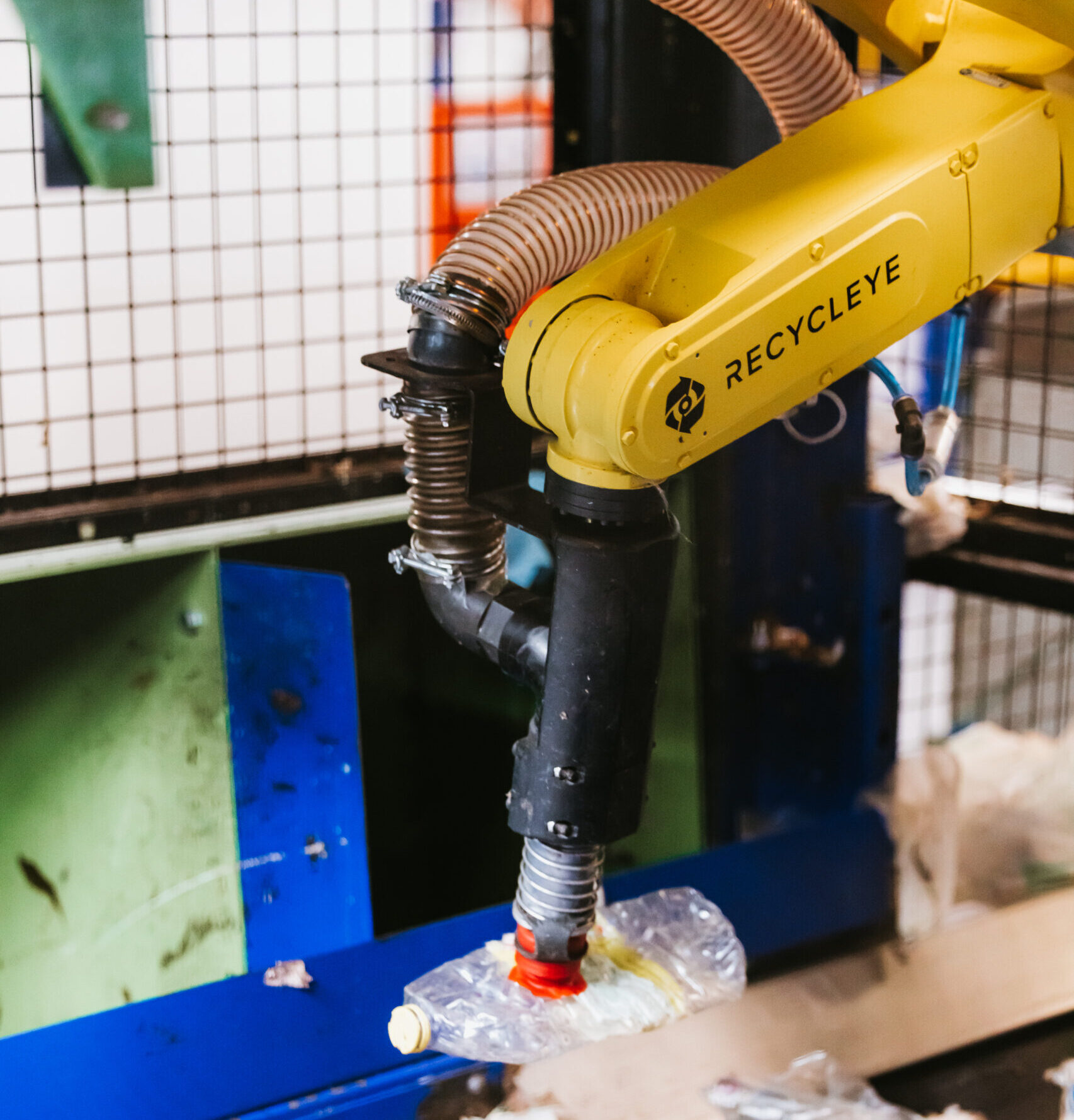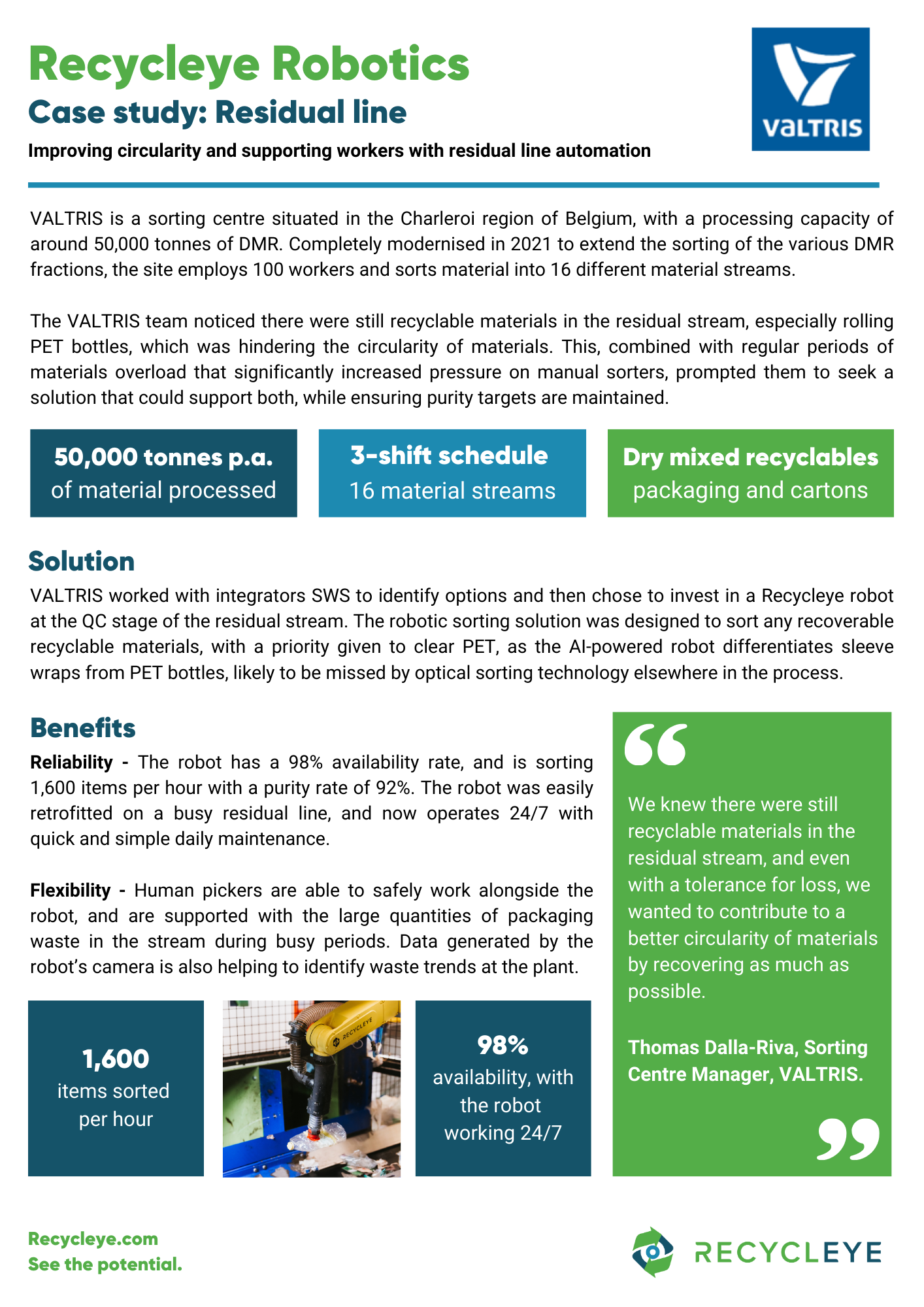VALTRIS wanted to increase circularity and support workers with automation.
VALTRIS is a sorting centre situated in the Charleroi region of Belgium, with a processing capacity of around 50,000 tonnes of DMR. Completely modernised in 2021 to extend the sorting of the various DMR fractions, the site employs 100 workers and sorts material into 16 different material streams.
The Challenge
The VALTRIS team noticed there were still recyclable materials in the residual stream, especially rolling PET bottles, which was hindering the circularity of materials.
This, combined with regular periods of materials overload that significantly increased pressure on manual sorters, prompted them to seek a solution that could support both, while ensuring purity targets are maintained.
VALTRIS worked with integrators SWS to identify options and then chose to invest in a Recycleye robot at the QC stage of the residual stream.

“We knew there were still recyclable materials in the residual stream, and even with a tolerance for loss, we wanted to contribute to a better circularity of materials by recovering as much as possible.”
Thomas Dalla-Riva, Sorting Centre Manager, VALTRIS.
Outcomes
1,600 objects per hour
92% purity
98% availability
24/7 operation
The robotic sorting solution was designed to sort any recoverable recyclable materials, with a priority given to clear PET, as the AI-powered robot differentiates sleeve wraps from PET bottles, likely to be missed by optical sorting technology elsewhere in the process.
Identification and picking of recyclables on a residual line
Reliability – The robot has a 98% availability rate, and is sorting 1,600 items per hour with a purity rate of 92%. The robot was easily retrofitted on a busy residual line, and now operates 24/7 with quick and simple daily maintenance.
Flexibility – Human pickers are able to safely work alongside the robot, and are supported with the large quantities of packaging waste in the stream during busy periods. Data generated by the robot’s camera is also helping to identify waste trends at the plant.
